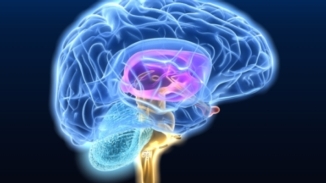
麦莉·塞勒斯与通心粉构成脑波身份认定方式
Miley Cyrus and Macaroni Combo Enables Brain-Based ID
麦莉·塞勒斯与通心粉构成脑波身份认定方式 (脑波身份认证)
An individual's unique brain response to images of a celebrity and a food could be used to create an ID procedure at high-security sites.
个体对于名人和食物照片的独特脑内反应可以作为高度安保地区的安全认证方式。
播音/撰文 凯伦·霍普金 (Karen Hopkin)
翻译 Meatle
审校 邰伦玥
In what may be hailed as one of the most significant scientific advances of all time, researchers have discovered a use for Adam Sandler and Brussels sprouts. Because when you look at pictures of celebrities like Sandler along with dishes like sprouts, your brain responds differently than anyone else’s. That unique pattern of brain activity—the neural equivalent of a fingerprint—can be used to identify you with perfect accuracy. So say scientists in a study in the journal IEEE Transactions on Information Forensics and Security. [Maria V. Ruiz-Blondet, Zhanpeng Jin and Sarah Laszlo, CEREBRE: A Novel Method for Very High Accuracy Event-Related Potential Biometric Identification]
这是可以被称颂为史上重要的科学发现之一:科学家发现了能用用上亚当?桑德勒 (Adam Sandler)和抱子甘蓝 (Brussels sprouts)的地方。因为当我们看到像桑德勒一样的名人和像抱子甘蓝一样的菜色时,我们的大脑对这些图片的反应会完全不同。这是一种独特的大脑反应模式——就像神经版本的指纹——能够完全将我们的个体予以区分。研究人员在IEEE信息鉴证与安全汇报(IEEE Transactions on Information Forensics and Security)上如此说明。
Last year this same team published work in which they recorded subjects’ responses to a series of words, like “podiatrist” or “sluice.” Because people’s brains respond differently to terms with which they are familiar—and no two people have the exact same vocabulary—showing someone enough words should produce a pattern of neural responses, in other words a brain print, unique to that individual. Indeed, the researchers found they could pinpoint one person out of a group of 32 with an accuracy of 97 percent.
上一年,这个研究队伍所发表的一项工作中,他们记录了受试者对于诸如“足科医生”或是“水闸”等一系列单词的反应。因为人们大脑对于他们所熟悉的不同的术语的大脑反应不同——而这世上没有两个人熟知的词汇是完全相同的,因此向对象展示数量足够的单词可以使对象脑内产生一种特定的神经响应模式,类似于一种大脑的“指纹”,专属于那一个人。事实上,研究人员能够通过这种方式在32个对象中以97%的准确率分辨其中的每一个人。
But given the work’s potential security applications—think Pentagon entry or nuclear weapons command—the researchers wanted to push the technique further to achieve absolute certitude. So they decided to throw in pics of foods and famous folk about which people were likely to harbor strong personal preferences. Like liver and Angelina Jolie or halibut and Anne Hathaway.
虽然这项技术在高安全等级的实际应用领域有很大的潜力——比如五角大楼的进入认证或是和武器发射前的认证,研究人员仍想等到将该技术的准确性提高到一定程度再进行应用。因此他们决定利用一系列的食物和名人的图片,明显地,每个人对这些图片的想法不尽相同。像肝脏和安吉丽娜·朱莉 (Angelina Jolie)或是比目鱼和安妮·海瑟薇 (Anne Hathaway).
Fifty volunteers looked at 400 images while wearing a cap decorated with sensors that record the brain’s electrical activity. The resulting brain prints, which included the neural activity produced in response to celebs, foodstuffs, vocabulary, and some repetitive visual patterns, allowed the researchers to recognize each and every participant with no slipups.
50名志愿者在佩戴着能感应大脑内神经电的头盔的情况下观看了400张图片。这些包含了志愿者对不同的名人、食物、词汇和重复图形的神经反应构成了各个志愿者的脑波指纹,这种指纹使研究人员能在没有错误的情况下分辨出每个志愿者。
Brain prints would beat fingerprints because fingerprints can be borrowed or stolen. Whereas no one can on Earth can ever know, much less replicate, exactly how your brain reacts when you see the word “mammoth” and pictures of mushrooms and Miley Cyrus.
脑波指纹足以取代指纹,因为指纹会被窃取或借用。同时在地球上除了你自己,没有人能知道,或是复制你看到“长毛象”一词、蘑菇和麦莉?塞勒斯 (Miley Cyrus)的图片时大脑的反应模式
未经书面许可任何人不得复制或镜像
京ICP备11000850号-1
 京公网安备11010502039775号
京公网安备11010502039775号 信息网络传播视听节目许可证0111611号
国家科技基础条件平台

















